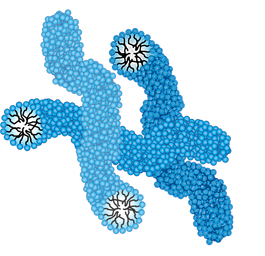Wormlike Micelle Properties
Quick Start
Wormlike micelles show distinctive properties with respect to concentration and timescale. Many shower gel and shampoo formulations rely on them to create a "rich" viscous feeling. Here we explore their viscosity and rheology behaviours, based on some core input values. How to get these inputs? By changing them till the graphs match your own experimental data.
Wormlike Micelle Properties

The long chains of wormlike micelles can entangle just like those of polymers. Entanglement gives viscosity which is seen as desirable in many consumer products such as shower gels. The surfactant molecules would usually be in uninteresting spherical micelles. But the addition of the right amount of salt causes the molecules to rearrange into the wormlike form. Dilution makes the viscosity decrease rapidly thanks both to the concentration-dependence of entangled viscosity and the reversion to spherical micelles as the salt concentration decreases.
The graph shows this concentration dependence. We see that at a critical entanglement concentration C* the low-shear viscosity, which increased linearly with concentration of surfactant, starts to increase strongly, to the power 3.5, so you get a lot of viscosity for a little extra surfactan. Just like a real polymer, there's a relaxation time, τrep based on reptation physics which causes this strong dependency. However, because the micelles easily break and reform there is another timescale τb. Whether you see easily-broken chains or polymer-like behaviour depends on the actual relaxation time, τR which is often considered to be given by `τ_R=sqrt(t_b . t_(rep)`. This really shows up in the oscillatory rheology via G' and G'' which are described, at frequency ω, by a pure Maxwell equation based around a base value, G0:
`G'=G_0(ω^2τ_R^2)/(1+ω^2τ_R^2)`
`G''=G_0(ωτ_R)/(1+ω^2τ_R^2)`
The value of G0 is in turn concentration dependent, being linear below C* then to the 2.25 power above it. τR has only a 1.25 power dependency. The app captures all these factors. You can choose to see the values in linear or log form. My personal preference is for linear, but the standard form is log.
The zero shear viscosity, η, is derived directly from the core values in the Maxwell equation, `η=G_0τ_R`. This calculated value is shown.
The point is that the behaviour of these micelles is extremely timescale-dependent. Over long timescales, they are low modulus, low viscosity. Over short timescales, such as during extrusion, mixing or spinning, they can behave like super-high molecular weight polymers because their chains can be μm long!
Flows like honey, wobbles like jelly
As explained by Neil Cunningham of the Centre for Industrial Rheology, the implications of the right-hand graph are that at low shear rates, gently tipping a bottle, the wormlike formulation should flow like honey (or, as in his excellent TA Webinar , corn syrup), while at high speeds it is elastic and wobbles like jelly.
Temperature dependence
τR decreases with temperature (though some exceptions are known) by conversion of longer chains to shorter end-capped chains. This follows an Arrhenius dependence from an activation energy, Ea. To give you a feel for what Ea means, in comparison to normal thermal fluctuations, it is shown converted to (room temp.) kT units. This decrease in relaxation time directly affects both the low shear viscosity and G' and G''.
Using the app
You enter relaxation time τR and G0 at C*, along with C* itself and Cmax for the X axis. In the left-hand graph you then see how the viscosity (calculated from τR and G0) changes and how G0 changes with concentration. In the right-hand graph you see the expected rheology at your chosen C value (the C for G slider) for the rheology plot. This is a reminder that the properties of wormlike micelles depend very strongly on the speed at which you measure them.
What values to use for the C*, τR, Eaand G0 values? There is no way to know these in advance. Instead, use the app to find these values by getting a good-enough fit to whatever experimental data you have.
Non-Maxwellian behaviour
True wormlike micelles show the Maxwellian behaviour described here. If your G' and G'' behaviour does not look like that then you have some other micellar form. That's neither good nor bad, just different.


